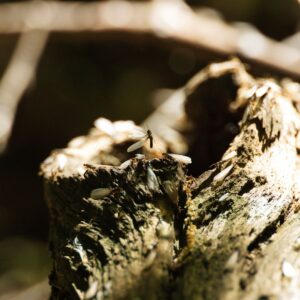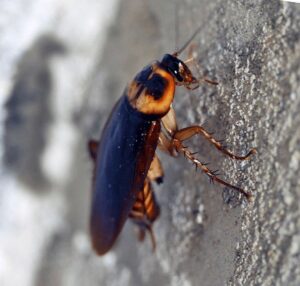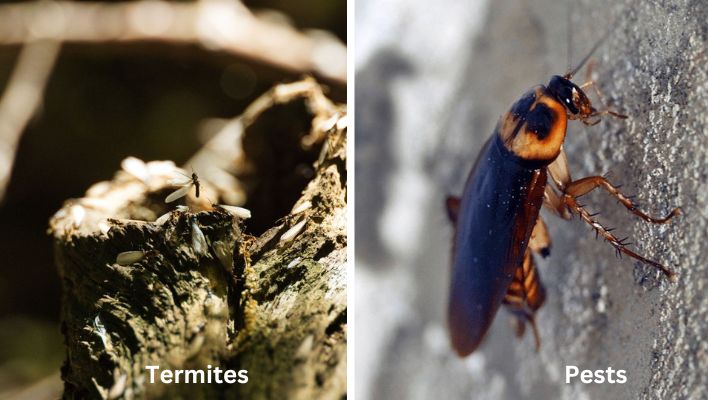When it comes to protecting your home from unwanted intruders, such as pests and termites, it’s essential to understand the differences between pest control and termite control. While both address the issue of unwanted guests, they target different types of invaders and require distinct approaches.
When it comes to protecting our homes, we all want to ensure that we are safe from the threats posed by unwanted intruders. Whether it’s pesky insects, rodents, or destructive termites, these invaders can compromise the integrity of our property, our health, and our peace of mind.
Unfortunately, the terms “pest control” and “termite control” are often used interchangeably, leading to confusion among homeowners. It’s important to recognize that while both pest control and termite control are critical for maintaining a pest-free environment, they address different types of infestations and require distinct approaches.
Pest control encompasses a broader spectrum, dealing with a wide range of pests such as ants, cockroaches, mosquitoes, rodents, and vegetable garden pests. On the other hand, termite control specifically targets termites, which have the potential to cause significant damage to our homes, especially wooden structures.
By unraveling the mysteries surrounding pest control and termite control, we can gain a better understanding of their significance and make informed decisions to protect our homes from termites or gardens from pests and loved ones.
What is Pest Control?
Pest control refers to the management and elimination of unwanted pests that can invade our living spaces and disrupt our daily lives. The primary purpose of pest control is to minimize the negative impact these pests have on our health, property, and overall well-being.
In our homes, we often encounter a variety of pests that can cause nuisance and pose risks. Some of the most common pests include ants, cockroaches, mosquitoes, flies, rodents (such as mice and rats), spiders, bed bugs, and vegetable garden pests (such as aphids mealybugs, spider mites, thrips, and many more).
Each pest species brings its unique set of challenges and requires specific strategies for effective control.
Pests can create a multitude of problems if left unaddressed. Firstly, they can pose health risks. Many pests carry disease-causing pathogens and can contaminate our food, utensils, and living spaces.
Mosquitoes, for example, are known carriers of malaria, dengue fever, and Zika virus. Cockroaches can trigger allergies and asthma attacks. Rodents can spread harmful bacteria through their droppings and urine. While garden can damage your garden
Furthermore, pests can cause physical damage to our property. Termites, in particular, can wreak havoc on the structural integrity of our homes by feeding on wood and weakening its foundation. Other pests like rats and mice gnaw on electrical wires, posing fire hazards. Even smaller pests like ants and silverfish can damage books, clothing, and furniture.
What is Termite Control?
Termite control on the other hand is a specialized branch of pest control that focuses specifically on managing and eliminating termite infestations. It is of utmost significance due to the destructive nature of termites and the potential damage they can cause to our homes and structures.
Termites are social insects that live in colonies and feed on cellulose-based materials, particularly wood. They have a highly organized social structure, with different castes performing specific roles within the colony.
The most common types of termites encountered in homes are subterranean termites, drywood termites, and dampwood termites.
Termites are known for their ability to remain hidden and undetected for long periods, making them particularly dangerous.

They construct intricate tunnel systems, often within the walls, floors, and foundations of our homes, allowing them to move freely and feed on wood without being noticed. By the time their presence becomes evident, significant damage may already have occurred.
The destructive potential of termites cannot be underestimated. They can compromise the structural integrity of a building by weakening wooden beams, pillars, and other load-bearing elements.
Over time, this can lead to sagging floors, warped walls, and even collapse in severe cases. Repairing termite damage can be costly and time-consuming, making early detection and intervention crucial.
Effective termite control involves a combination of preventive measures, regular inspections, and targeted treatments.
Professionals trained in termite control techniques can assess the extent of an infestation, identify the termite species involved, and implement appropriate measures to eliminate the colony and prevent future infestations.
Early detection is key in termite control. Regular inspections by professionals can help identify signs of termite activity, such as mud tubes, discarded wings, or hollow-sounding wood.
By detecting termites in their early stages, appropriate measures can be taken to mitigate the damage and protect the structure of our homes.
Given the complex nature of termite behavior and the potential for extensive damage, it is highly recommended to seek professional intervention for effective termite control.
Trained technicians have the knowledge, experience, and access to specialized products and treatments necessary to eradicate termites and safeguard our homes from their destructive tendencies.
Key Differences between Pest Control and Termite Control
When it comes to pest control and termite control, there are several fundamental distinctions that set them apart. Understanding these differences is crucial for effectively addressing specific pest issues and choosing the appropriate control methods. Let’s delve into the dissimilarities between pest control and termite control:
Target Pests:
- Pest Control: Pest control encompasses a wide range of pests, including insects like ants, cockroaches, mosquitoes, flies, and rodents like mice and rats. It addresses the management and elimination of various nuisance pests that can impact our health, property, and well-being.
- Termite Control: Termite control focuses exclusively on termites, which have the potential to cause extensive damage to structures, particularly wooden materials. Termites feed on cellulose-based materials, making them a significant threat to the structural integrity of homes.
Approaches and Strategies:
- Pest Control: Pest control typically involves a multifaceted approach. It includes preventive measures, such as sealing entry points and removing potential food and water sources, as well as the use of various treatments like sprays, baits, traps, and insecticides.
- Termite Control: Termite control requires a more specialized approach due to the unique behavior and habits of termites. It often involves comprehensive inspections, targeted treatments, and the application of termiticides or baiting systems specifically designed for termite eradication.
Specific Treatments and Techniques:
- Pest Control: Pest control methods focus on minimizing pest populations, preventing their entry into buildings, and addressing immediate infestations. Common techniques include insecticide sprays, fogging, trapping, and integrated pest management (IPM) practices.
- Termite Control: Termite control utilizes specific treatments and techniques tailored to the behavior and biology of termites. This can include soil treatments, termiticide applications, termite baiting systems, and physical barriers like termiticide-treated zones or physical barriers.

Differences between Pest Control and Termite Control
| Pest Control | Termite Control | |
|---|---|---|
| Target Pests | Wide range of pests | Termites |
| Primary Focus | Management and elimination of pests | Management and elimination of termites |
| Common Pests | Ants, cockroaches, mosquitoes, rodents | Subterranean, drywood, dampwood termites |
| Approach | Multifaceted | Specialized |
| Treatments | Sprays, baits, traps, integrated pest management | Termiticides, baiting systems, physical barriers |
| Expertise Required | General knowledge of pests and techniques | Specialized knowledge of termites and treatments |
| Potential Damage | Physical damage, health risks | Structural damage to wood-based materials |
| Importance of Early Detection | Crucial for effective control | Crucial to mitigate damage and prevent infestations |
| Professional Intervention | Optional, depending on the severity | Recommended for effective treatment and prevention |
It is important to recognize that termite control requires specialized knowledge and expertise. Due to the secretive nature of termites and the potential for extensive damage, professional intervention is highly recommended for effective termite control.
Pest control, on the other hand, can often be managed with DIY methods or by hiring a pest control service, depending on the severity of the infestation and the pest species involved.
Consideration of Choosing Between Pest Control and Termite Control
When faced with pest-related issues, it is essential to assess the specific circumstances and consider various factors before deciding between pest control and termite control. Here are some key considerations to keep in mind:
- Type of Pest Infestation: The first step is to identify the type of pest causing the issue. Determine whether the problem primarily involves a wide range of pests, such as ants, cockroaches, or rodents, or if it specifically revolves around termites. Understanding the specific pest infestation will guide you in choosing the appropriate control method.
- Severity of the Infestation: Assess the severity of the infestation. If you are dealing with a minor pest problem that can be easily managed through DIY methods or general pest control services, pest control may be sufficient. However, if the infestation is extensive or involves termites known for their destructive capabilities, seeking professional termite control becomes critical.
- Potential Damage: Consider the potential damage that can be caused by the pests. Termites, for example, can compromise the structural integrity of your home, leading to costly repairs. If the pest infestation poses a significant risk to the property, specialized termite control is usually the best course of action.
- Health Risks: Evaluate the health risks associated with the pest infestation. Some pests, like mosquitoes and rodents, can transmit diseases, while others may trigger allergies or asthma. If the infestation poses health risks, pest control measures should be implemented promptly to safeguard your well-being.
- Long-Term Prevention: Consider the importance of long-term prevention. While pest control can help manage current infestations, termite control often focuses on preventing future infestations and protecting your property in the long run. If you want to ensure ongoing protection against termites or other persistent pests, investing in specialized termite control may be necessary.
- Professional Inspections and Assessments: Engaging professional pest control experts is crucial for accurate inspections and assessments. They have the knowledge, experience, and tools to identify the specific pest issues, determine the extent of the infestation, and recommend the most effective control method. Professional inspections provide valuable insights that can guide your decision-making process.
When choosing between pest control and termite control, it is important to assess the specific pest-related issues, and consider factors such as the type and severity of the infestation, potential damage, health risks, and the need for long-term prevention. Additionally, relying on professional inspections and assessments ensures that you make an informed decision and take the necessary steps to effectively address the pest problem.

Pest Control vs. Termite Control FAQs
What are the signs of a termite infestation?
There are several signs that may indicate a termite infestation. These include:
- Discarded Wings: After swarming, termites shed their wings, leaving them behind near windowsills, doorways, or other entry points.
- Mud Tubes: Termites construct mud tubes, which are small tunnels made of soil, wood particles, and saliva, as a means of protection and moisture retention. These tubes are often found along the foundation or walls.
- Wood Damage: Termites feed on wood from the inside out, leaving behind hollowed-out or damaged wood. Tapping on wood surfaces may produce a hollow sound.
- Frass: Drywood termites push out their fecal pellets, known as frass, from small kick-out holes. These tiny pellets resemble sawdust or coffee grounds.
- Swarmers: Winged termites, also known as swarmers, may be seen flying around lights or windows during the mating season. The presence of swarmers is a strong indication of a nearby termite colony.
Can regular pest control treatments prevent termite infestations?
Regular pest control treatments primarily focus on managing and preventing common pests like ants, cockroaches, and rodents. While they may help reduce the overall risk of pest infestations in your home, they are not specifically designed to prevent or eradicate termites. Termite control requires specialized techniques and treatments that target the unique behavior and biology of termites. For effective termite prevention, it is recommended to engage in specific termite control measures, such as regular inspections, the use of termiticides or baiting systems, and the implementation of physical barriers.
How long does a termite treatment typically last?
The duration of a termite treatment can vary depending on factors such as the severity of the infestation, the chosen treatment method, and the termite species involved. Termite treatments are designed to provide long-term protection against future infestations.
Liquid termiticide treatments, for example, can typically last for several years, while termite baiting systems may require ongoing monitoring and maintenance. It is important to consult with a professional termite control provider to determine the most appropriate treatment option and its expected duration for your specific situation.
Are pest control products safe for pets and children?
The safety of pest control products for pets and children depends on various factors, including the type of product used, application methods, and adherence to label instructions.
Many pest control products available today are designed to be low in toxicity when used according to the manufacturer’s instructions. However, it is important to exercise caution and follow safety guidelines.
Keep pets and children away from treated areas until the products have dried or settled, and store pest control products out of their reach.
If you have specific concerns or need to address a pest issue in an area with high pet or child activity, consult with a professional pest control provider who can offer safe and effective solutions.
Can I handle pest or termite control on my own?
DIY pest control can be an option for minor pest problems or preventive measures. There are various products available for consumer use, such as sprays, traps, and baits, that can help manage common pests.
However, for more severe or persistent infestations, or for termite control, it is highly recommended to seek professional assistance. Pest control professionals have the expertise, knowledge, and access to specialized products and treatments necessary to effectively address complex pest issues.
They can provide accurate inspections, tailored solutions, and ongoing monitoring to ensure long-term pest management and prevent further damage to your property.
Conclusion
Pest control and termite control are both essential for maintaining a pest-free and structurally sound environment. While pest control addresses a wide range of pests that can impact our health and property, termite control specifically focuses on the eradication and prevention of termite infestations, which can cause extensive damage.
Throughout this article, we have highlighted the importance of understanding the differences between pest control and termite control. Pest control involves managing various pests through a multifaceted approach, while termite control requires specialized knowledge and techniques to address the unique behavior of termites.
We discussed the significance of early detection in both pest control and termite control. Regular inspections, professional assessments, and prompt interventions are crucial for mitigating damage and preventing infestations from spreading.
When choosing between pest control and termite control, it is important to consider factors such as the type and severity of the infestation, potential damage, health risks, and the need for long-term prevention.
While DIY pest control methods may be suitable for minor issues, professional assistance is highly recommended for severe infestations or termite-related concerns.
By understanding the signs of termite infestation, considering preventive measures, and engaging in professional services when necessary, we can effectively manage pests and protect our homes and structures from potential damage.
Remember, effective pest control and termite control require a proactive approach and the expertise of trained professionals. Prioritize the health and safety of your property by seeking professional assistance and taking preventive measures to create a pest-free environment for yourself and your loved ones.
